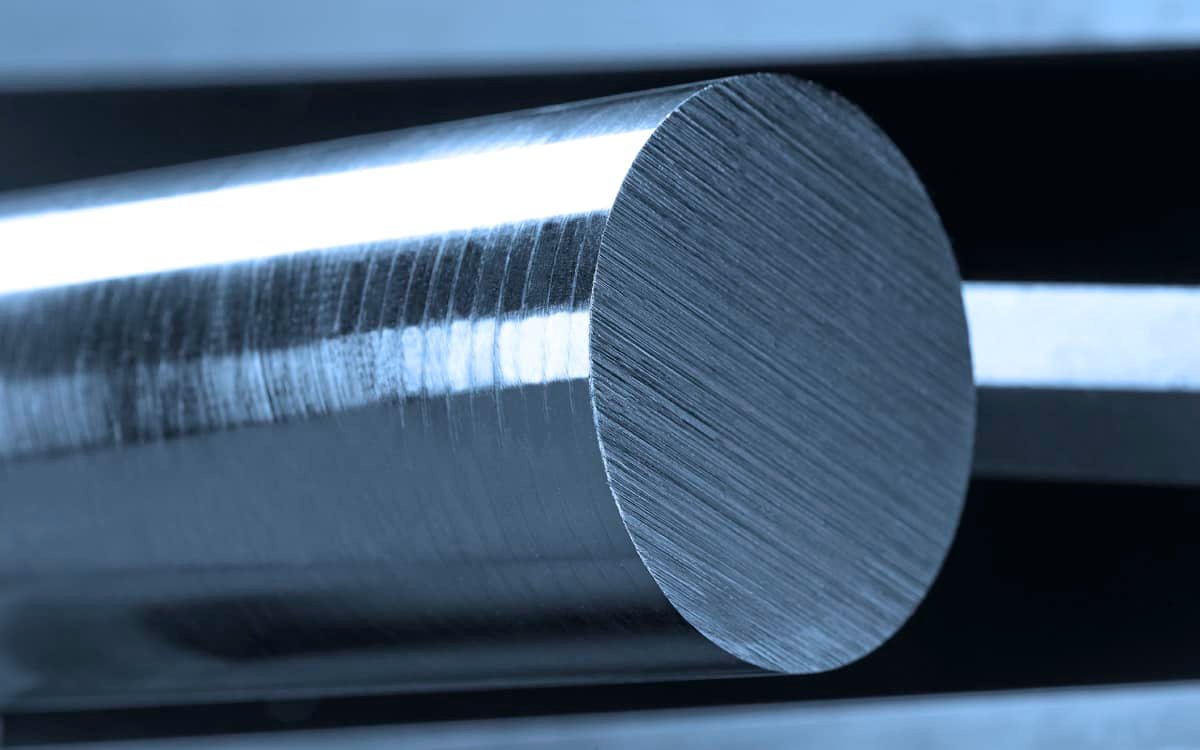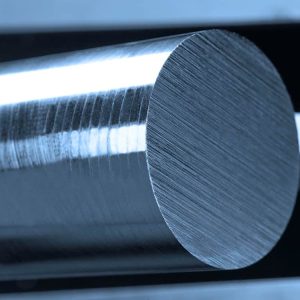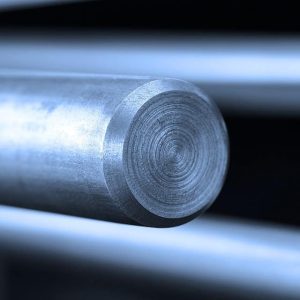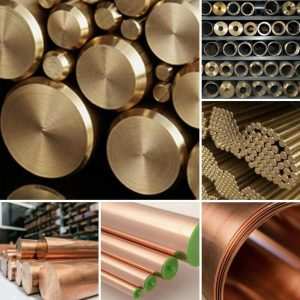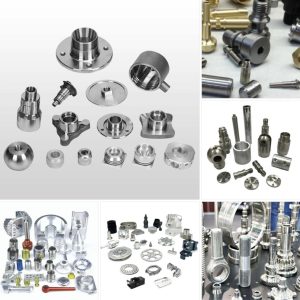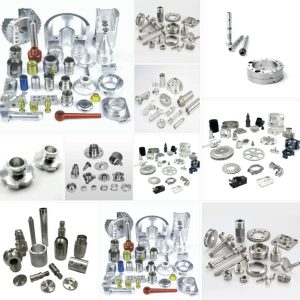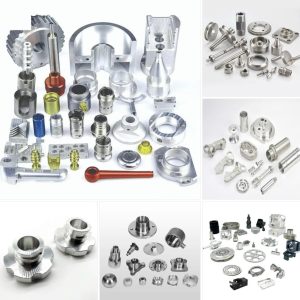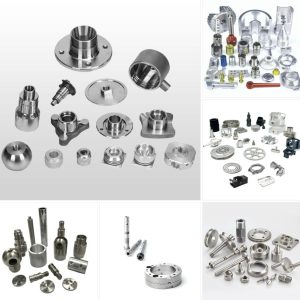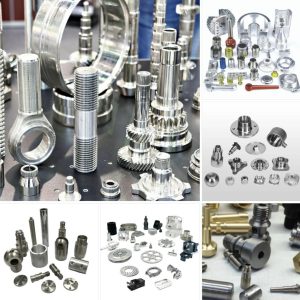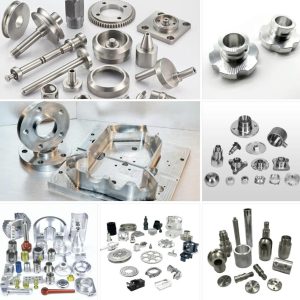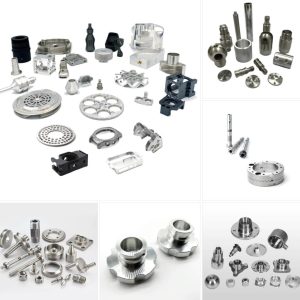Stainless Steel 316/L Round Bars Customized with Your Demand – Size OD20mm x 3m Length
$60,00
Stainless Steel 316/L Round Bars Customized with Your Demand – Size OD20mm x 3m Length is now in stock, competitive price, good service, fast delivery, flexible payment.
List of Materials
| Stainless | Titanium | Nickel |
| Aluminium | Copper | Steel |
| Others | ||
List of Items
| Coils/Roll | Plates/Sheets | Pipes |
| Round Bar | Hexagons | Flat Bars |
| Fiting | Wire/Rod | Square Tubes |
| Others | ||
Stainless Steel 316/L Round Bars Customized with Your Demand – Size OD20mm x 3m LengthSS316 1 inch x 10 feet round bar is now in stock, competitive price, good service, fast delivery, flexible payment.
| Name: Matthew |
| WhatApp/Viber: +1(972) 672-2412 |
| Mail: vnusmarket@gmail.com |
What is Stainless Steel?
Stainless steel is a corrosion-resistant alloy of iron, chromium and, in some cases, nickel and other metals.
Completely and infinitely recyclable, stainless steel is the “green material” par excellence. In fact, within the construction sector, its actual recovery rate is close to 100%. Stainless steel is also environmentally neutral and inert, and its longevity ensures it meets the needs of sustainable construction. Furthermore, it does not leach compounds that could modify its composition when in contact with elements like water.
In addition to these environmental benefits, stainless steel is also aesthetically appealing, extremely hygienic, easy to maintain, highly durable and offers a wide variety of aspects. As a result, stainless steel can be found in many everyday objects. It also plays a prominent role in an array of industries, including energy, transportation, building, research, medicine, food and logistics.
Families of Stainless Steel
There are five families of stainless steel: ferritic, martensitic, austenitic, duplex, and precipitation hardening. These names are derived from the crystal structure of the steels, which determines their metallurgical behavior.
Ferritic
Ferritic stainless steels are plain chromium stainless steels with a chromium content varying between 12% and 18% and a low carbon content. They are magnetic and not hardenable by heat treatment.
| TIÊU CHUẨN ANH | TIÊU CHUẨN TƯƠNG ĐƯƠNG / THAY THẾ | |||||
| Tên Inox | Số hiệu | AISI | UNS | Other US | BS | Generic/Brand |
| Dòng Ferritic - Popular Grades | ||||||
| X2CrNi12 | 1,4003 | S40977 | 3CR12 | |||
| X2CrTi12 | 1,4512 | Inox 409 | S40900 | 409S19 | ||
| X6CrNiTi12 | 1,4516 | |||||
| X6Cr13 | 1.400 | Inox 410S | S41008 | 403S17 | ||
| X6CrAl13 | 1,4002 | Inox 405 | S40500 | 405S17 | ||
| X6Cr17 | 1,4016 | Inox 430 | S43000 | 430S17 | ||
| X3CrTi17 | 1.4510 | Inox 439 | S43035 | |||
| X3CrNb17 | 1,4511 | Inox 430Nb | ||||
| X6CrMo17-1 | 1,4113 | Inox 434 | S43400 | 434S17 | ||
| X2CrMoTi18-2 | 1,4521 | Inox 444 | S44400 | |||
| Ferritic - Specials Grades | ||||||
| X2CrMnTi12 | 1.4600 | |||||
| X2CrSiTi15 | 1.4630 | |||||
| X2CrTi17 | 1.4520 | |||||
| X1CrNb15 | 1,4595 | |||||
| X2CrMoTi17-1 | 1,4513 | |||||
| X6CrNi17-1 | 1,4017 | |||||
| X5CrNiMoTi15-2 | 1,4589 | S42035 | ||||
| X6CrMoNb17-1 | 1,4526 | Inox 436 | S43600 | |||
| X2CrNbZr17 | 1.4590 | |||||
| X2CrTiNb18 | 1,4509 | Inox 441 | S43932 | 18CrCb | ||
| X2CrNbTi20 | 1,4607 | |||||
| X2CrTi21 | 1,4611 | |||||
| X2CrTi24 | 1,4613 | |||||
| X2CrMoTi29-4 | 1,4592 | S44700 | 29-Thg4 | |||
| X2CrNbCu21 | 1,4621 | S44500 | ||||
| X2CrTiNbVCu22 | 1,4622 | S44330 | ||||
| Ferritic - Heat Resistant | ||||||
| X10CrAlSi7 | 1,4713 | |||||
| X10CrAlSi13 | 1,4724 | |||||
| X10CrAlSi18 | 1,4742 | |||||
| X18CrN28 | 1,4749 | Inox 446 | ||||
| X10CrAlSi25 | 1,4762 | |||||
Martensitic
Martensitic stainless steels were the first stainless steels that were commercially developed (as cutlery) and have a relatively high carbon content (0.1% - 1.2%) compared to other stainless steels. They are plain chromium steels containing between 12% and 18% chromium. Alloy 410 is the basic, general purpose, and magnetic grade that is hardenable by quenching and tempering. These stainless steels can be heat treated to obtain high strength with good ductility.
| Martensitic | ||||||
| X12Cr13 | 1,4006 | Inox 410 | S41000 | 410S21 | ||
| X15Cr13 | 1,4024 | Inox 420 | S42000 | |||
| X20Cr13 | 1,4021 | Inox 420 | S42000 | 420S29 | ||
| X30Cr13 | 1,4028 | Inox 420 | S42000 | 420S45 | ||
| X39Cr13 | 1,4031 | Inox 420 | S42000 | 420S45 | ||
| X46Cr13 | 1,4034 | Inox 420 | S42000 | |||
| X38CrMo14 | 1,4419 | |||||
| X55CrMo14 | 1.4110 | |||||
| X50CrMoV15 | 1,4116 | |||||
| X39CrMo17-1 | 1,4122 | |||||
| X3CrNiMo13-4 | 1,4313 | S41500 | F6NM | |||
| X4CrNiMo16-5-1 | 1,4418 | 248 SV | ||||
| Martensitic Precipitation Hardened (PH) | ||||||
| X1CrNiMoCu12-5-2 | 1,4422 | |||||
| X1CrNiMoCu12-7-3 | 1,4423 | |||||
| X5CrNiCuNb16-4 | 1,4542 | S17400 | 17-4 PH | |||
| X7CrNiAl17-7 | 1,4568 | S17700 | 17-7 PH | |||
Austenitic
Series austenitic stainless steels are non-magnetic. When nickel is added to stainless steel in sufficient amounts, the crystal structure changes to "austenite."
The basic composition of 300 series austenitic stainless steels is 18% chromium and 8% nickel. This enhances their corrosion resistance and modifies the structure from ferritic to austenitic.
Austenitic grades are the most commonly used stainless steels, accounting for more than 70% of production. (Alloy 304/304L followed by Alloy 316L are the most commonly specified grades by far.) They are not hardenable by heat treatment.
| Austenitic - Popular Grades | ||||||
| X10CrNi18-8 | 1.4310 | Inox 301 | S30100 | 301S21 | ||
| X2CrNiN18-7 | 1,4318 | Inox 301LN | S30153 | |||
| X2CrNi18-9 | 1,4307 | Inox 304L | S30403 | 304S11 | ||
| X2CrNi19-11 | 1,4306 | Inox 304L | S30403 | |||
| X2CrNiN18-10 | 1,4311 | Inox 304LN | S30453 | 304S51 | ||
| X5CrNi18-10 | 1,4301 | Inox 304 | S30400 | 304S15 | ||
| X8CrNiS18-9 | 1,4305 | Inox 303 | S30300 | 303S31 | ||
| X6CrNiTi18-10 | 1,4541 | Inox 321 | S32100 | 321S31 | ||
| X4CrNi18-12 | 1,4303 | Inox 305 | S30500 | 305S19 | ||
| X2CrNiMo17-12-2 | 1,4404 | Inox 316L | S31603 | 316S11 | ||
| X2CrNiMoN17-11-2 | 1,4406 | Inox 316LN | S31653 | 316S61 | ||
| X5CrNiMo17-12-2 | 1,4401 | Inox 316 | S31600 | 316S31 | ||
| X6CrNiMoTi17-12-2 | 1,4571 | Inox 316Ti | S31635 | 320S31 | ||
| X2CrNiMo17-12-3 | 1,4432 | Inox 316L | S31603 | 316S13 | ||
| X2CrNiMo18-14-3 | 1,4435 | Inox 316L | S31603 | 316S13 | ||
| X2CrNiMoN17-13-5 | 1,4439 | Inox 317LMN | ||||
| X1NiCrMoCu25-20-5 | 1,4539 | N08904 | 904S13 | 904L | ||
| Austenitic - Specials Grades | ||||||
| X5CrNi17-7 | 1,4319 | |||||
| X5CrNiN19-9 | 1,4315 | |||||
| X5CrNiCu19-6-2 | 1.4640 | |||||
| X1CrNi25-21 | 1,4335 | Inox 310L | ||||
| X6CrNiNb18-10 | 1,455 | Inox 347 | S34700 | 347S31 | ||
| X1CrNiMoN25-22-2 | 1,4466 | Inox 310MoLN | S31050 | |||
| X6CrNiMoNb17-12-2 | 1.4580 | |||||
| X2CrNiMoN17-3-3 | 1,4429 | Inox 316LN | S31653 | |||
| X3CrNiMo17-13-3 | 1,4436 | Inox 316 | S31600 | 316S33 | ||
| X2CrNiMoN18-12-4 | 1,4434 | Inox 317LN | S31753 | |||
| X2CrNiMo18-15-4 | 1,4438 | Inox 317L | 317S12 | |||
| X1CrNiMoCuN24-22-8 | 1,4652 | |||||
| X1CrNiSi18-15-4 | 1,4361 | Inox 306 | S30600 | |||
| X11CrNiMnN19-8-6 | 1,4369 | |||||
| X6CrMnNiCuN18-12-4-2 | 1,4646 | |||||
| X12CrMnNiN17-7-5 | 1,4372 | Inox 201 | S20100 | |||
| X2CrMnNiN17-7-5 | 1,4371 | Inox 201L | S20103 | |||
| X9CrMnNiCu17-8-5-2 | 1,4618 | |||||
| X12CrMnNiN18-9-5 | 1,4373 | Inox 202 | S20200 | |||
| X9CrMnCuNB17-8-3 | 1,4597 | Inox 204Cu | S20430 | |||
| X8CrMnNi19-6-3 | 1,4376 | |||||
| X1NiCrMo31-27-4 | 1,4563 | N08028 | Sanicro 28 | |||
| X1CrNiMoCuN25-25-5 | 1,4537 | |||||
| X1CrNiMoCuN20-18-7 | 1,4547 | S31254 | F44 | 254SMO | ||
| X1CrNiMoCuNW24-22-6 | 1,4659 | |||||
| X1NiCrMoCuN25-20-7 | 1,4529 | N08925 | 1925hMo | |||
| X2CrNiMnMoN25-18-6-5 | 1,4565 | |||||
| X9CrMnNiCu 17-8-5-2 | 1,4618 | |||||
| 1,3964 | Nitronic 50 | |||||
| Austenitic - Heat Resistant Grades | ||||||
| X8CrNiTi18-10 | 1,4878 | Inox 321 | S32100 | |||
| X15CrNiSi20-12 | 1,4828 | |||||
| X9CrNiSiNCe21-11-2 | 1,4835 | S30815 | 253 MA | |||
| X12CrNi23-13 | 1,4833 | Inox 309 | S30900 | 309S24 | ||
| X8CrNi25-21 | 1,4845 | Inox 310S | S31000 | 310S24 | ||
| X15CrNiSi25-21 | 1,4841 | Inox 314 | S31400 | |||
| X6CrNiSiNCe19-10 | 1,4818 | S30415 | 153 MA | |||
| X10NiCrSi35-19 | 1,4886 | 330 | ||||
| Austenitic - Creep Resisting Grades | ||||||
| X6CrNi18-10 | 1,4948 | Inox 304H | S30409 | 304S51 | ||
| X6CrNiMoB17-12-2 | 1,4919 | Inox 316H | S31635 | 316S51 | ||
Duplex
Duplex stainless steel plate contains relatively high levels of chromium (between 18% and 28%) and low to moderate amounts of nickel (between 1.5% and 8%). The high corrosion resistance and excellent mechanical properties of duplex stainless steels can be attributed to their chemical composition and balanced (duplex) microstructure of approximately equal volume percentages of ferrite and austenite.
LDX 2101® is a low nickel, nitrogen-enhanced lean duplex stainless steel with corrosion resistance similar to 304 but with much higher mechanical strength. This enables it to be used in thinner cross-sections which provide cost savings to the end user. Alloys 2304 and 2205 are the most common grades. They both exhibit outstanding resistance to chloride stress-corrosion cracking.
“Super” duplex grades have enhanced pitting and crevice corrosion resistance when compared with 300-series austenitic stainless steels or conventional duplex alloys. This can be attributed to the enhanced levels of chromium, molybdenum and nitrogen found in these materials. Alloy 2507 is the most common “super” duplex grade.
| Duplex | ||||||
| X2CrNiN22-2 | 1,4062 | S32202 | DX 2202 | |||
| X2CrMnNiMoN21-5-3 | 1,4482 | S32001 | ||||
| X2CrMnNiN21-5-1 | 1,4162 | S32101 | 2101 LDX | |||
| X2CrNiN23-4 | 1,4362 | S32304 | 2304 | |||
| X2CrNiMoN12-5-3 | 1,4462 | S31803/ | F51 | 318S13 | 2205 | |
| S32205 | ||||||
| Super Duplex | ||||||
| X2CrNiCuN23-4 | 1,4655 | |||||
| X2CrNiMoN29-7-2 | 1,4477 | |||||
| X2CrNiMoCuN25-6-3 | 1,4507 | F61 | Ferrinox 255 | |||
| X2CrNiMoN25-7-4 | 1,441 | S32750 | F53 | 2507 | ||
| X2CrNiMoCuWN25-7-4 | 1,4501 | S32760 | F55 | Zeron 100 | ||
| X2CrNiMoSi18-5-3 | 1,4424 | |||||
Precipitation Hardening
Precipitation hardening stainless steels, like the martensitic types, can be strengthened (i.e., hardened) by heat treatment. The mechanism is metallurgically different from the process in the martensitic types. This means that either martensitic or austenitic precipitation hardening structures can be produced. These stainless steels combine high strength and hardness with corrosion resistance which is superior to that of the martensitic chromium stainless steels.
| Precipitation Hardening | ||||||
| X1CrNiMoCu12-5-2 | 1,4422 | |||||
| X1CrNiMoCu12-7-3 | 1,4423 | |||||
| X5CrNiCuNb16-4 | 1,4542 | S17400 | 17-4 PH | |||
| X7CrNiAl17-7 | 1,4568 | S17700 | 17-7 PH | |||

